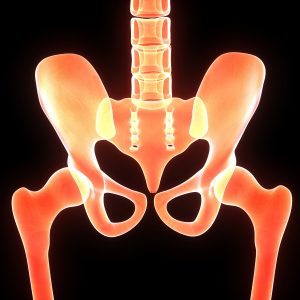 Sacroiliac Joint Disease is a serious case of inflammation that affects the sacroiliac joint. In the past, the sacroiliac joint has been thought to be the cause of lower back and leg pain; however in the past three decades, that pain is now associated with herniated disks.
Sacroiliac Joint Disease is a serious case of inflammation that affects the sacroiliac joint. In the past, the sacroiliac joint has been thought to be the cause of lower back and leg pain; however in the past three decades, that pain is now associated with herniated disks.
Estimates suggest that sacroiliac (SI) joint pain affects anywhere from 15% to 30% of the general population. However women are considerably more likely than men to experience this pain.
Sacroiliac joint disease remains difficult to diagnose. Make it easier to know when you’re suffering from sacroiliac joint disease by knowing as much as possible. We’ve outlined 5 things you should know about sacroiliac joint disease that will make it easier to understand and identify.
5 Things to Know about Sacroiliac Joint Disease
-
What the Sacroiliac Joint Is
The Sacroiliac Joint is actually two joints that are both small and firm. The joints are located on either side of the bottom of the spinal cord below the lumbar section and above the coccyx. The joint is known to be extremely strong given the ligaments surrounding it and it’s a joint that does not incur much motion. The main responsibility of the sacroiliac joint is to transfer forces from the upper part of the body to the legs and hips and it also absorbs shocks from jumping, falling, or lifting heavy objects.
-
Why Sacroiliac Joint Disease is Hard to Diagnose
There are plenty of factors that contribute to Sacroiliac Joint Disease being hard to diagnose including: the fact that it is difficult to apply pressure to the joint or manipulate it in any way, there are few tests that completely isolate the joint for further testing, X-Rays, CAT Scans, and MRIs read normally more often than not, and there are multiple other issues that can cause symptoms similar to those related to Sacroiliac Joint Disease.
-
How Orthopedic Surgeons Diagnose Sacroiliac Joint Disease
There are two ways in which orthopedic surgeons can diagnose Sacroiliac Joint Disease. The first way is through a physical examination that can determine if the pain is caused by the Sacroiliac Joint. This test is usually performed by hanging a leg off of an examination table and rotating it. If this examination recreates the pain and there is no other explanation for the pain then the joint may be in question. Several physical examinations should be performed before the diagnosis is made. If a physical examination cannot determine the source of the pain then a sacroiliac joint injection may be useful. This is not often performed though due to the fact that the sacroiliac joint is so small and it takes a lot of experience to be able to correctly insert a needle into that area. If this process is taken though, a physician injects a numbing solution called lidocaine into the joint. If that relieves the pain then it is determined that the Sacroiliac Joint is the cause of said pain.
-
What Treatments are Available
Though Sacroiliac Joint Disease is hard to diagnose, treatment is easy as there are many options for treatment available. Initially, doctors will recommend ice, heat, and rest – three tried and true methods of recovery. Often, medication is included in this treatment plan. If a patient prefers to stay away from medication related relief, chiropractic manipulation may be suggested by a physician. Braces, supports, and physical therapy also fall under optional treatment plans along with injections. Though injections are mainly used to diagnose the disease in the Sacroiliac Joint, they can also be used to treat further pain and inflammation.
-
When Surgery is the Right Option
If all treatment plans fail and pain subsists in the Sacroiliac Joint then surgery is the next step. Surgery should only be considered after months of attempted treatment with no pain relief. During surgery, the Sacroiliac Joints are fused to eliminate the chance of recreating odd motions that may be the cause of pain.
Diagnosis and treatment of Sacroiliac Joint Disease can be difficult to achieve. If you are experience severe pain in your pelvic region when you move certain was or excessively during sports, work, etc. then seek medical help. Contact Orthopaedic Specialists at 502-212-2663 and speak to Dr. Stacie Grossfeld who is double board certified in orthopedic surgery and sports medicine.

Recent Comments